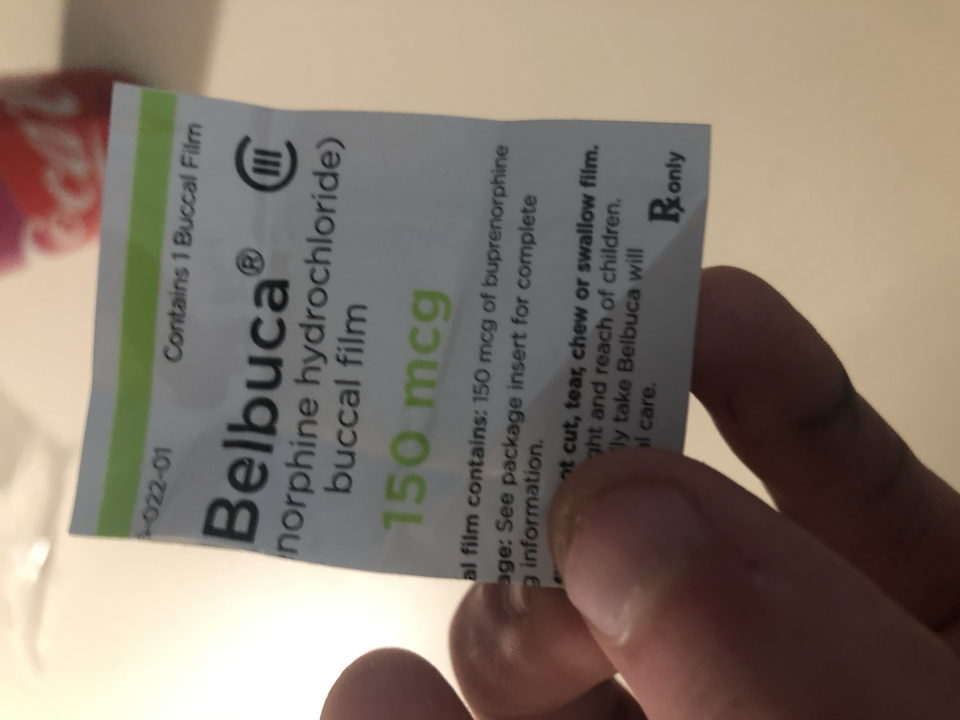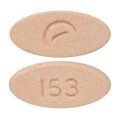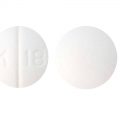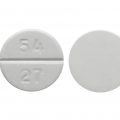Belbuca (buprenorphine) is a twice a day buccal (cheek) film used for around-the-clock (continuous) pain relief. It’s a partial opioid agonist and may be safer than full opioid agonists like morphine (MS Contin) and oxycodone (Oxycontin), but still has many potential risks and must be used with caution.
Belbuca is used to help relieve severe ongoing pain. Buprenorphine belongs to a class of drugs known as opioid analgesics. Do not use this medication to relieve pain that is mild or that will go away in a few days. This medication is not for occasional (“as needed”) use.
How Belbuca 150 Mcg works
Belbuca (buprenorphine) is a partial opioid (narcotic) pain reliever. It binds to mu-opiate receptors in the brain to change how you feel and respond to pain. It’s considered a partial opioid because it causes an opposite effect when it binds to delta and kappa-opioid receptors, which may help prevent medication misuse and abuse.
How to use Belbuca 150 Mcg
Read the Medication Guide provided by your pharmacist before you start using buprenorphine and each time you get a refill. Follow the illustrated directions for the proper use of this medication. If you have any questions, ask your doctor or pharmacist.
Use this medication on a regular schedule as directed by your doctor, not as needed for sudden (breakthrough) pain. Use this medication in the mouth as directed by your doctor, usually every 12 hours. To reduce your risk of side effects, your doctor may direct you to use this medication every 24 hours when you start this medication and gradually increase to every 12 hours. Follow your doctor’s instructions carefully.
Before using, rinse your mouth with water or use your tongue to wet the inside of your cheek. Use the tip of a dry finger to place one film inside your mouth with the yellow side facing against one cheek. Press and hold the film in place for 5 seconds, then remove your finger. The film should stay in place on its own after this. Leave it in place until it is dissolved. Do not move the film with your tongue/finger or drink or eat food until the film has completely dissolved. If your doctor directs you to use more than one film at the same time, do not place one on top of the other. Place one film on each side of your mouth. Do not place the film over open sores or lesions on the inside your cheek.
Do not use the film if it is cut, damaged, or changed in any way.
The dosage is based on your medical condition and response to treatment. Do not increase your dose or use this drug more often or for longer than prescribed, because your risk of side effects may increase. Properly stop the medication when so directed.
Pain medications work best if they are used as the first signs of pain occur. If you wait until the pain has worsened, the medication may not work as well.
Before you start using this medication, ask your doctor or pharmacist if you should stop or change how you use your other opioid medication(s). Other pain relievers (such as acetaminophen, ibuprofen) may also be prescribed. Ask your doctor or pharmacist about using buprenorphine safely with other drugs.
Suddenly stopping this medication may cause withdrawal, especially if you have used it for a long time or in high doses. To prevent withdrawal, your doctor may lower your dose slowly. Tell your doctor or pharmacist right away if you have any withdrawal symptoms such as restlessness, mental/mood changes (including anxiety, trouble sleeping, thoughts of suicide), watering eyes, runny nose, nausea, diarrhea, sweating, muscle aches, or sudden changes in behavior.
When this medication is used for a long time, it may not work as well. Talk with your doctor if this medication stops working well.
Though it helps many people, this medication may sometimes cause addiction. This risk may be higher if you have a substance use disorder (such as overuse of or addiction to drugs/alcohol). Use this medication exactly as prescribed to lower the risk of addiction. Ask your doctor or pharmacist for more details.
Tell your doctor if your pain does not get better or if it gets worse.
When you start Belbuca 150 Mcg, you may experience an adjustment period. Remember to:
- Give your body time to adjust.
You may experience a change in symptoms when you start Belbuca. You might need time to reach your optimal dose to make sure you get adequate chronic pain relief to help minimize side effects.
- Track your progress.
Keep a record of your pain, symptoms, and any side effects. Record exactly what you’re feeling to make the discussion with your doctor easier.
- Report any changes.
Tell your healthcare provider if you experience any changes in your symptoms, and report any side effects to your provider immediately. Never attempt to manage or deal with side effects on your own.
What Are Side Effects of Belbuca?
- Common side effects of Belbuca include:
- nausea,
- constipation,
- headache,
- vomiting,
- dizziness,
- drowsiness,
- fatigue,
- diarrhea,
- dry mouth, and
- upper respiratory tract infection,
- anemia,
- abdominal pain,
- swelling of the extremities,
- fever,
- urinary tract infection,
- runny or stuffy nose,
- sinus infection,
- bronchitis,
- loss of appetite,
- muscle spasms,
- back pain,
- anxiety,
- insomnia,
- depression,
- sore throat,
- increased sweating,
- itching,
- rash,
- hot flashes, or
- high blood pressure.
What happens if you swallow Belbuca (buprenorphine)?
Belbuca (buprenorphine) provides pain relief after the medication is absorbed through your cheek. Unfortunately, the medication does not work well if it is swallowed. This is why it’s given either IV, through the cheek or under the tongue, or as a patch. If you swallow the films, it’s likely that the medication won’t be absorbed and you won’t have pain relief.
How long does it take to feel the effects of Belbuca (buprenorphine)?
As with all medications, the amount of time it takes to feel the effects of Belbuca (buprenorphine) will be different for each person. Since the film is absorbed through the cheek, it enters the blood quickly and the highest levels of the medication are usually seen within a few hours of the dose. Keep in mind that Belbuca (buprenorphine) is meant for the treatment of chronic pain and works best when it is taken every 12 hours. You should be able to feel the full effects of the medication 3 or 4 days after starting the medication. Talk to your provider if you are not happy with your pain relief after taking the medication for at least 4 days. They may make changes to your dose.
Is Belbuca (buprenorphine) like Suboxone?
Belbuca (buprenorphine) and Suboxone both contain the same active medication, buprenorphine. Belbuca (buprenorphine) is a buccal film placed in the cheek that is used for pain, whereas Suboxone is film or tablet placed under the tongue used for opioid dependence. This is why Suboxone also contains a medication called naloxone. Both medications work similarly in the body, but are for different types of conditions and are not interchangeable.
Can you take methadone with Belbuca (buprenorphine)?
It’s not recommended for people to take Belbuca (buprenorphine) and methadone at the same time since both medications are long-acting opioids and can put you at risk for a dangerous overdose. Make sure your providers know if you are taking methadone, even if you are getting it from a methadone clinic. There are medications that can interact with methadone that your providers will want to avoid. For example, if you start taking Belbuca (buprenorphine) while you still have methadone in your system, the Belbuca (buprenorphine) can interact with the methadone and cause an unpleasant opioid withdrawal.






